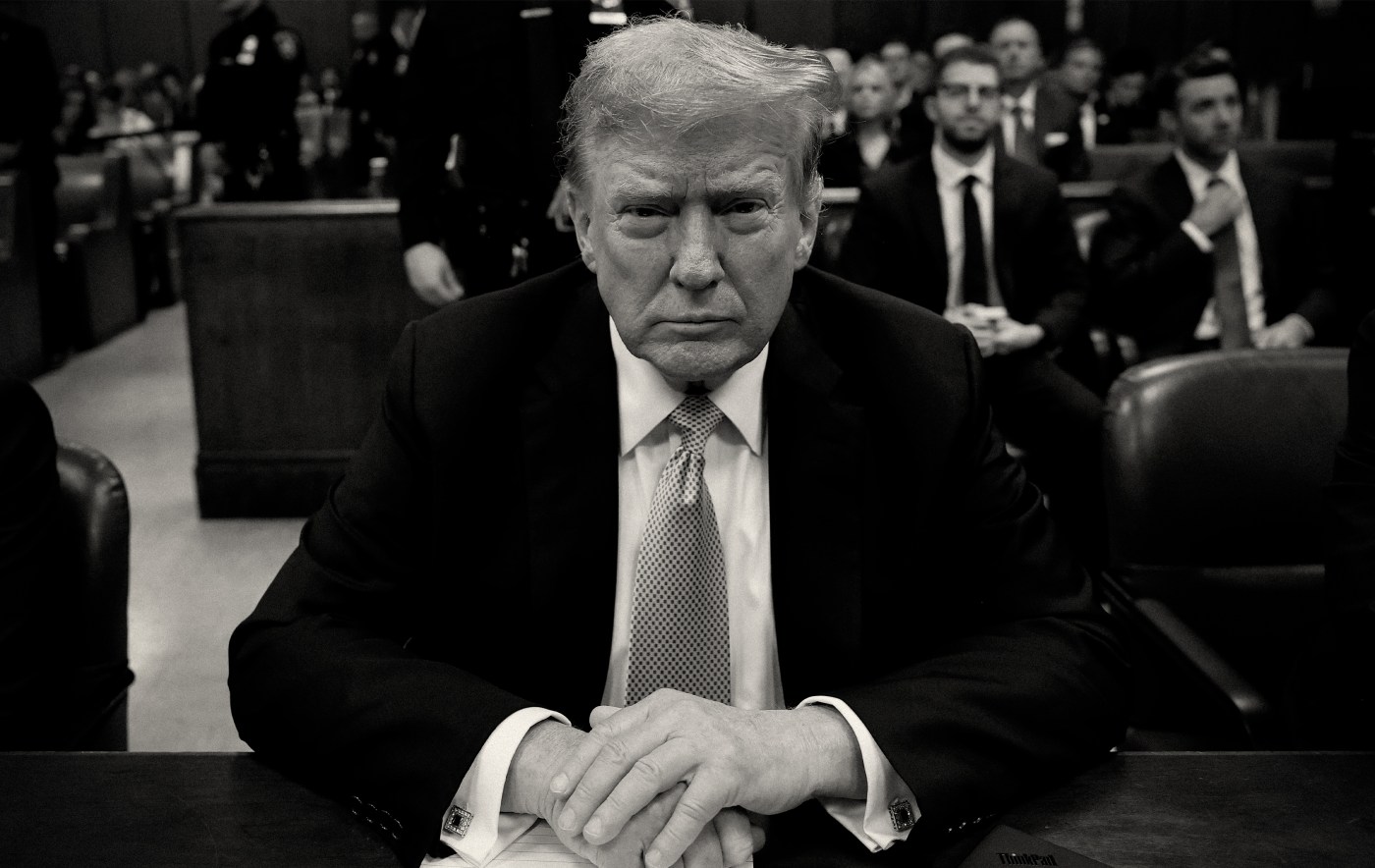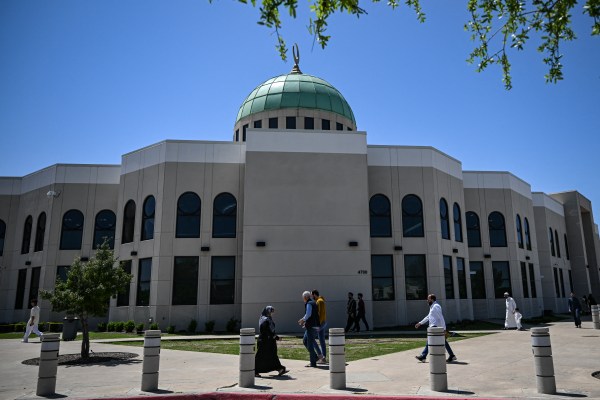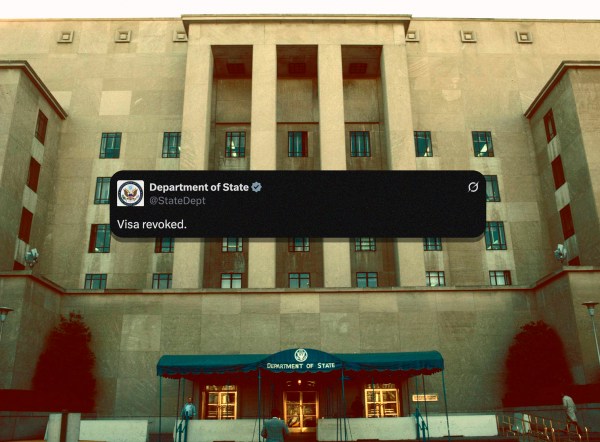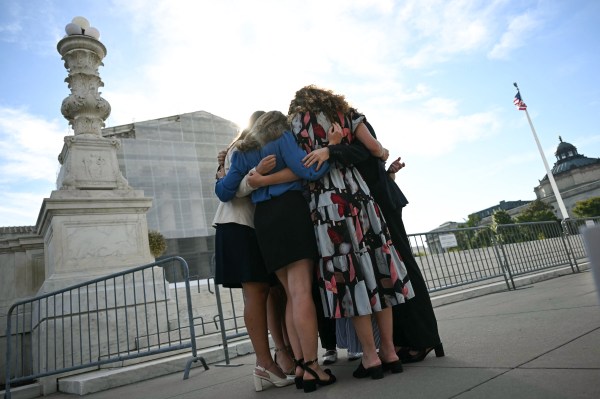The strike suit is a pernicious business practice: It is deployed to extract cash, not to resolve a dispute. Its target must decide whether to pay the costs of legal defense or the costs of settlement. Essentially, the defendant must play a hand of poker against an opponent who pushes out a large and menacing raise: The options are to match the bet—and face the prospect of even more raises in the future—or fold. The settlements produced by strike suits are of little social value—they’re just one of the costs of doing business.
Such a tactic is even more pernicious when the litigant is the president of the United States, because its target now faces even weightier reasons to settle: presidential control over federal bureaucracies with immense regulatory power. This new business model is lawfare on steroids.
Earlier this year, Paramount Global agreed to cut a settlement check for roughly $16 million to Trump’s future presidential library and his lawyers. That payment was the culmination of Trump’s suit last year accusing CBS News, a Paramount subsidiary, of broadcasting a deceptively edited interview of then-Vice President Kamala Harris. Trump’s complaint alleged that the edits were designed to “tip the scales in favor of the Democratic Party” in last year’s election. The theory was questionable: Trump argued that the broadcast edits had violated a Texas consumer protection statute and had caused him personal financial harm.
The ultimate settlement was also questionable, and not just because of the cramped view of the First Amendment that Trump’s argument implied. Paramount’s sale to Skydance Media was on the horizon—a sale that the Federal Communications Commission (dominated by Trump-friendly Republicans) could either approve or scuttle. The pending merger made the specter of litigation significantly more costly for Paramount; a $16 million payoff is a small price to ensure an $8 billion sale.
And the Paramount settlement was hardly unprecedented: It followed a similar $16 million payout from ABC News to Trump’s library and lawyers for an on-air mistake made by anchor George Stephanopoulos. More recently, Trump achieved a $24.5 million settlement from YouTube after it suspended his account in 2021, marking the third settlement the president has engineered from Big Tech. And don’t assume that YouTube settles with just anyone: As one of Trump’s lawyers told the Wall Street Journal, “If he had not been re-elected, we would have been in court for a thousand years. It was his re-election that made the difference.”
And now the Journal faces yet another Trump defamation suit resting on an insubstantial claim. Trump’s lawyers argue that the Journal defamed him by falsely reporting that he authored a risqué birthday note to deceased sexual predator Jeffrey Epstein. That claim is weak because proof of defamation requires more than a false statement; at a minimum, what is needed is a false statement that damages someone’s reputation, and it remains unclear how the birthday note story could damage Trump’s reputation. At this point, both his relationship with Epstein and his reputation for off-color remarks about women are well-established. Thus the chances of a Trump victory are poor—but the virtue of a strike suit is that, if it forces a settlement, the merits are irrelevant.
And Trump’s most recent defamation strike suit—this one against the New York Times, Penguin Random House, and several associated individuals—is at the zenith of its genre. The president’s lawyers have learned from experience: The injury ostensibly cured by the strike suit is something like an afterthought. We are now at the point where the justification for the suit is almost unnecessary. All that must be done is to file a document that creates alarm, labor, and expense for the opposing party.
Perhaps that is why the president’s newest complaint accomplishes very little in the way of making legally recognizable arguments (and why the judge in the case sent the president’s lawyers back to the drawing board). Instead, at some length, it accomplishes a secondary objective. It almost palpably ignores the goal of explaining the grounds for the client’s concerns; instead, this complaint is packed with statements aimed at the adulation of Donald Trump.
The complaint would embarrass any client who had the capacity for embarrassment. It begins with an extended account of Trump’s reelection, which it describes as “the greatest personal and political achievement in American history.” It then elaborates on Trump’s “worldwide reputation for success,” starting with an account of his “decades of magnificent real estate achievements,” then listing the “magnificent Trump Tower” and 18 other buildings by name, then providing another list of 48 “brands” that Trump bears responsibility for, followed by a summary of his “hundreds of history-making media appearances and roles,” including Wrestlemania V and other World Wrestling Entertainment events.
Trump’s complaint claims that his business success and “global celebrity” “resonates in the American collective consciousness,” with special notice given to The Apprentice—a television show that “represented the cultural magnitude of President Trump’s singular brilliance, which captured the zeitgeist of our time.” The document’s 25 pages of hagiography culminate in a particularly Trumpian credential: a table that chronicles a decade’s worth of the future president’s Nielsen ratings.
The president’s lawyers do not explain the wrongful conduct of the defendants until almost halfway through their 85-page complaint. At that point—in a section memorably headlined “The Illogical, Tortured, and Twisted Falsity of the Book and the Articles”—they finally describe the theory of the case: Namely, Trump was defamed by “the absurd, fanciful, and false story that President Trump somehow owes his public persona and celebrity status” to the NBC executives who created The Apprentice. In other words: President Trump was a celebrity before The Apprentice, the show didn’t make him any more of a celebrity, and to suggest otherwise is defamatory.
Of course this argument is ridiculous. It is difficult to see how Trump could be defamed by the assertion that the producers of The Apprentice helped make Trump a bigger celebrity, and it is impossible to see how any such assertion could be demonstrably true or false. Such claims fall into the realm of opinion and theory—a realm that a defamation action cannot reach.
Any public figure who sues for defamation faces the high hurdle of actual malice, which can be satisfied only by proof that a defendant knew a statement was false or recklessly disregarded the possibility that it was false. (One can understand the requirements of actual malice as an application of the Costanza Rule: It’s not a lie if you believe it!) Good faith provides a perfect defense to accusations of actual malice: If the defendant was without any doubts about the truth of what he or she said, the statement lacks actual malice. But, in their filing, Trump’s lawyers pretend those constraints do not exist. Instead, they argue that all that they must show is that “each defendant feels actual malice toward President Trump in a colloquial sense”—that is, actual malice is shown by the fact that each defendant wants the president to “fail politically and financially.” Under modern defamation law, however, to show malice only “in a colloquial sense” is to show nothing. The Trump complaint’s premodern understanding of actual malice was superseded by New York Times v. Sullivan more than 60 years ago, but Trump’s lawyers react to this inconvenience by turning up the volume: “Put bluntly, Defendants baselessly hate President Trump in a deranged way.”
Relatedly, Trump’s lawyers insist that the defendants’ behavior includes “practices that go against widely accepted journalistic standards.” The complaint therefore argues—at some length—that the defendants display bias, rely on anonymous and disreputable sources, give the White House insufficient time to return calls, perform slapdash investigations, and base their stories on “incomplete, minimal information.” I am uncertain whether these accusations are true, but I am absolutely sure that they cannot prove defamation. That’s because actual malice can’t be demonstrated with examples of “practices that go against widely accepted journalistic standards.” A shorter label for such practices is negligence, and in this context, negligence does not suffice.
Indeed, it isn’t just the complaint’s arguments that are empty; it is the evidence the complaint offers to support them. By my count, this complaint provides 37 instances of alleged defamation. Unambiguously, at least three-quarters of them do not qualify. Most of the journalistic details the complaint recounts—Trump’s desk was covered with newspaper articles about himself! The carpets on the 26th floor of Trump Tower smelled musty!—are insufficient to demonstrate defamation. In fairness, the complaint occasionally highlights claims that might actually damage the president’s reputation, but they are surrounded by a vast, barren desert of unobjectionable journalistic propositions that are not and could never be defamatory.
None of this is meant to suggest that the complaint’s line of argument is coherent or clear. Summarizing its substance is an almost archeological endeavor, given its pervasive irrelevancies: a non sequitur alleging “persistent election interference” by the New York Times here, an attack on Kamala Harris there, a description of Fred C. Trump’s business successes here, an elaborate six-page account of the “Russia Collusion Hoax” there. Reading this brief is like biting into a hot dog, only to discover nothing inside but fat and filler.
In its own way, larding up a brief with such irrelevancies is an innovative legal strategy —it forces the defense lawyer to flyspeck every sentence for any suggestion of an actual argument. It relies on the deference that courts grant the presidential litigant, and the era of such deference is over. That was the message of the order issued by Judge Steven Merryday four days after Trump’s complaint was filed in U.S. District Court. The order required Trump’s complaint to be struck from the record, while allowing him to submit a new pleading within 28 days—so long as it is less than half the length of the rejected complaint. Merryday found that the president’s complaint didn’t comply with federal court procedures because it did not include a “short and plain statement of the claim,” and each of its parts must be “simple, concise, and direct.” His order emphasized the impropriety of using the court as a platform for political speech, rather than as an office for the resolution of disputes.
Even though he was surely appalled by the excesses of the complaint, Judge Merryday’s order is a model of judicial composure. It calmly summarizes the complaint’s deficiencies, even while reproducing some of its most intemperate moments (such as its charge that the defendants possess “the desperate need to defame with a partisan spear rather than report with an authentic looking glass”). A judge with a temperament more like mine, on the other hand, would issue an order noting the similarities between the complaint and the anatomy of someone with irritable bowel syndrome: Both are swollen, distended, and filled with gas.
Merryday’s finding that Trump’s complaint was “decidedly improper and inadmissible” was a welcome reaction to the abusive tactics that the newest presidential strike suit typifies. Yet it seems unlikely that the president has learned anything from the experience. Four days after Merryday’s order, Trump claimed on Truth Social that Jimmy Kimmel’s return to ABC “puts the network in jeopardy by playing 99% positive Democrat GARBAGE … to the best of my knowledge, that would be a major Illegal Campaign Contribution. I think we’re going to test ABC out on this. Let’s see how we do. Last time I went after them, they gave me $16 Million Dollars. This one sounds even more lucrative.”
This posture does not suggest that the president intends to confine his future lawsuits to meritorious claims. I only hope he doesn’t sue me for saying so.






Please note that we at The Dispatch hold ourselves, our work, and our commenters to a higher standard than other places on the internet. We welcome comments that foster genuine debate or discussion—including comments critical of us or our work—but responses that include ad hominem attacks on fellow Dispatch members or are intended to stoke fear and anger may be moderated.
With your membership, you only have the ability to comment on The Morning Dispatch articles. Consider upgrading to join the conversation everywhere.